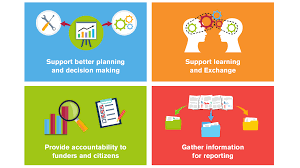Counting Down: 40 Business Days From Today
As today marks the beginning of a 40-day countdown in the business world, it's an opportune moment to harness this timeframe for strategic planning, goal setting, and efficient execution.

1. Define Clear Objectives
Identify and outline the specific goals or milestones to achieve within the 40-business-day period. Whether it's launching a product, completing a project phase, or enhancing customer service, clarity in objectives is paramount.

2. Prioritize Tasks
Break down larger goals into smaller, actionable tasks. Prioritize these tasks based on urgency, impact, and alignment with overall business objectives.

3. Create a Strategic Plan
Develop a strategic plan outlining how each task will be accomplished. Assign responsibilities, set deadlines, and establish accountability measures to ensure progress.

4. Utilize Resources Wisely
Optimize resource allocation, whether it's human resources, budgets, or technology. Maximize efficiency by allocating resources where they are most needed to achieve the desired outcomes.

5. Monitor Progress and Adapt
Regularly track progress against set goals. Be adaptable; if necessary, revise strategies based on real-time insights or changing circumstances.

6. Foster Collaboration
Encourage teamwork and collaboration among employees. Utilize collective skills and insights to drive innovation and problem-solving.

7. Communicate and Motivate
Maintain open communication channels. Provide updates on progress, celebrate milestones, and motivate teams to stay focused and engaged.

8. Evaluate and Reflect
As the 40-day countdown draws to a close, evaluate achievements against set objectives. Reflect on successes, challenges, and lessons learned to improve future strategies.

Conclusion
The countdown of 40 business days offers a focused window of opportunity to drive progress, achieve goals, and propel the business forward. By employing strategic planning, efficient execution, and adaptable approaches, businesses can maximize this timeframe to accomplish significant milestones and lay the groundwork for future success.
This article provides a general framework for utilizing a 40-day timeframe effectively within a business context, emphasizing strategic planning, goal setting, execution, and evaluation to drive progress and success.
Counting down 40 business days from today sets the stage for a strategic timeline in the corporate world. This duration, equivalent to roughly two calendar months, holds significance in planning, executing projects, and achieving milestones within various industries. Here's a comprehensive breakdown:
Planning and Strategy:
With 40 business days, companies can strategically plan and execute short-to-medium-term objectives. It allows for thorough strategic planning sessions, analyzing market trends, and aligning goals with quarterly targets.
Project Execution:
It's an opportune time frame to initiate, progress, or complete projects. Teams can implement project management methodologies, allocate resources, track progress, and ensure timely deliverables within this period.
Product Development:
For businesses involved in product development cycles, 40 business days can encompass crucial phases, including design, testing, and initial production runs, preparing for market launches or iterations.
Marketing Campaigns:
This duration allows for well-structured marketing campaigns. From conceptualization to execution, it accommodates planning, content creation, advertising strategies, and engagement initiatives to drive brand awareness and sales.
Sales Cycles and Targets:
Sales teams can strategically divide their approach, focusing on lead generation, nurturing, and closing deals within this timeframe. It allows for aligning sales strategies with the business's quarterly or yearly targets.
Training and Development:
Companies can invest in employee training programs, upskilling initiatives, or team-building exercises. It allows for comprehensive training modules or workshops without disrupting daily operations significantly.
Financial Planning:
It's an ideal period for financial assessments, budget reviews, forecasting, and strategic financial planning for upcoming quarters or fiscal years.
Compliance and Regulatory Matters:
Businesses can address compliance requirements, regulatory changes, or necessary audits within this time frame, ensuring adherence to industry standards and legal obligations.
Continuous Improvement:
This period provides an opportunity for businesses to review processes, identify inefficiencies, and implement improvements in operations, customer service, or internal workflows.
Customer Engagement:
It's ample time to focus on customer feedback, improve customer service experiences, and implement strategies to enhance customer loyalty or retention rates.
In summary, 40 business days offer a valuable window for businesses to achieve various objectives, ranging from project execution and sales targets to strategic planning and improvement initiatives. It's a timeframe that, if utilized effectively, can significantly impact a company's growth and success.
Certainly, let's delve deeper into how businesses can maximize the potential of 40 business days:
Market Expansion Strategies:
This duration allows companies to explore new markets, conduct market research, establish partnerships, or initiate entry strategies into untapped regions.
R&D and Innovation:
It's an opportunity to allocate resources towards research and development initiatives, fostering innovation, and potentially introducing new products or services.
Strategic Partnerships:
Companies can use this time to negotiate, solidify, or expand partnerships with suppliers, distributors, or other businesses, fostering mutually beneficial collaborations.
Operational Optimization:
Reviewing and streamlining operational processes, implementing automation, or adopting new technologies can significantly enhance efficiency and productivity within this timeframe.
Risk Mitigation:
Assessing potential risks, devising risk management strategies, and implementing contingency plans helps businesses prepare for unforeseen challenges.
Employee Engagement:
Focusing on employee well-being, satisfaction, and engagement initiatives can foster a positive work culture and boost overall productivity.
Supply Chain Management:
Evaluating and optimizing supply chains, sourcing options, or inventory management systems can lead to improved logistics and cost efficiencies.
Strategic Acquisitions or Mergers:
For businesses considering acquisitions or mergers, 40 business days provide a suitable time frame to conduct due diligence and negotiate deals.
Brand Reinforcement:
This period offers opportunities to strengthen brand presence through targeted brand-building initiatives, enhanced customer experiences, or impactful marketing campaigns.
Sustainability Initiatives:
Companies can dedicate efforts to sustainability goals, implementing eco-friendly practices, reducing carbon footprints, or adopting sustainable business models.
Crisis Preparedness:
Businesses can use this time to create or update crisis management plans, ensuring readiness to handle unexpected events or disruptions.
Feedback Integration:
Collecting, analyzing, and implementing feedback from customers, stakeholders, or employees aids in continuous improvement and better decision-making.
Utilizing 40 business days effectively involves a combination of strategic planning, focused execution, and adaptability. It's a valuable period that empowers businesses to achieve significant progress, drive growth, and lay the groundwork for future success.



You must be logged in to post a comment.